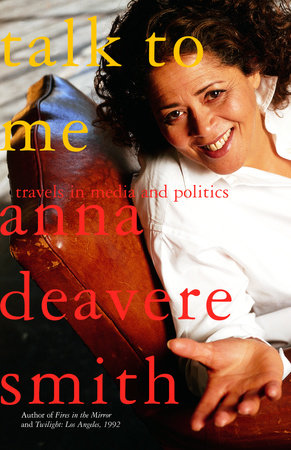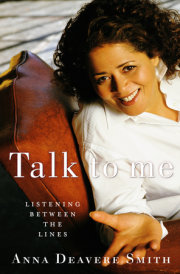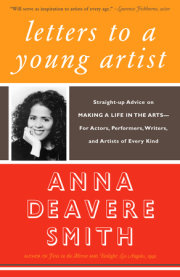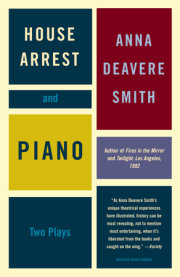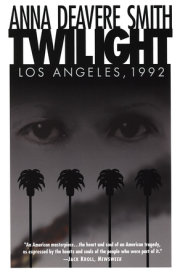PROLOGUE
WILD WAVES AND BONFIRES
1971
BALTIMORE, MARYLAND
A HOWARD JOHNSON'S PARKING LOT NEAR I-95 I packed an overnight bag and counted out eighty dollars, all the money I had in the world. My mother drove me to a Howard Johnson's near I-95. A car pulled up with four friends, each of whom had come from a different point north of Maryland. At age twenty-one I left my family, my hometown, and, with my four friends, took off for California. We wanted to see America and to make sense, each in our own way, of what to do with all the breakage and promise that had been released through the antiwar movement, the assassinations of Martin Luther King and Bobby Kennedy, the beginning of the environmental movement, and the bra-burning, brief as it was, of the women's movement. And there was the masculine glamour and fashion of the black liberation movement. Years later I would talk to some of those Black Panthers. One of them mused openly, "I think we got caught up in the theater of it. We began to believe we were in a movie." One of the Chicago Eight would similarly say, "It was theater, until the cops showed us the difference between reality and theater, and hauled some of us off to jail."
Was it theater or not? I took off to see for myself. Quite apart from the theater, the sexiness of the antiestablishment voice was another promise, a serious promise that was eking out from under all the chants, all the music, all the pageantry. What was promised, after all was said and done, was a larger idea of "we the people." What was promised was that more voices would matter, that the patrician white male would not be the only one to hold the chair. This promise was made by none other than ourselves, so if we were to ever be disillusioned again, we would have to be the cause of that disillusionment.
My mother tells me she sat in the car and cried for a long time after I left. Her life's work had been to educate me, my four siblings, and hundreds of others who had passed through her classrooms all over Baltimore. Her goal had been to position us firmly in the black middle class.
Her trajectory was one that had been formed in the Depression?a colored girl growing up poor in a family of eight in a tough, segregated Baltimore. My father, more fortunate, had been the son of a businessman who had an eighth-grade education and had started a business with a pushcart. His shop had eventually held its own on Pennsylvania Avenue, the street for black businesses during the day and good jazz at night. My grandfather had managed to send all six of his kids to college. My mother and her siblings, too, all went to college.
I suspect that some of those kids my mother taught in the Baltimore public schools, she only wanted to keep out of trouble, heartbreak, and illiteracy. (She never believed there was such a thing as a nonreader.) As for me, she had spent many nights helping me read and write, and I could tell she had faith in me. But life is more than reading, writing, and putting the correct answer on a test. Especially when the tests and the books themselves become suspect, as they did in Wagnerian proportions round about 1968.
It was a rocky road, and I, as the first child, was to make the first solid step. It wasn't to be the step my mother expected. My college education answered few questions. It created many. I came out of college with debts, and, rather than a five-year plan, or even a foothold in the next generation of black success, I had about fifty years' worth of questions about the world I came from and the world I live in. I am still in the process of answering those questions.
What I remember most about America on that trip was the gorgeous tapestry of autumn in the West Virginia hills, the hamburgers in Texas, and the poverty in Oklahoma, which was beyond anything I could have imagined. We landed finally on Coronado, an island off San Diego, and stayed in the home of a friend whose husband was in the Navy and out on duty somewhere dangerously close to Vietnam. The place was in stark contrast to what I thought California would offer. Everyone seemed to ride bikes, play tennis, and have blond hair. It was as if nothing of the sixties push to color American culture had happened there. We did boring "survival" jobs during the day and watched the sunset over the Pacific every night, until each one of us figured out, singly, which route we should take next.
One by one we left one another. It was sad. As each person parted, I knew that I may have been watching a series of dreams deferred. I had watched my friends speak their dreams each night. They started out with bluster, and, as the days rolled on, rather than constructing the dreams into plans and realities, they began to leave their sentences unfinished, taking drags on a cigarette where words used to follow, sipping water or wine where a fist used to be pounded, or sighing where a guffaw used to come. The conversation was melting.
One night, in a van that we had driven to a beach in Baja California, just south of the Mexican border, I could feel the palpable pull of the known. It weighed on all my friends. I could feel the weight of it in my own heart. It was an ache. It was time, for them, one by one, to get back to the boyfriend, father, or mother who had caused them to have questions in the first place. They would return with the questions unanswered. This was very different from my project, which was to take, at its word, and with both eyes open, and at the same time one eye piercing suspiciously, the movement's promise to give more voice to more people. I left the van and sat on the beach, with its wild waves and bonfires. The roar of each was wilder than anything I had experienced on the East Coast. I began to fear that my own dreams would meet the air undone. I decided not to speak them to my friends, although that had been the purpose of my trip. The trip with eighty dollars and an overnight bag had been meant to speak my dreams out loud until I had a plan. But dreams don't have to be spoken, they only have to be seen.
Soon after we got back to Coronado, I said good-bye, and went north. 1973
GEARY STREET
SAN FRANCISCO, CALIFORNIA
I arrived, in June 1973, at a five-story building that sat above several storefronts on Geary Street in downtown San Francisco. Among the storefronts were a glitzy deli with mounds of chopped liver in the window, called David's Delicatessen, an art gallery, a soup place called Salmagundi's, and a bar just to the right of that called The Curtain Call. I couldn't afford to buy anything in any of those places. Even for a cup of coffee or an apple, I had to go up the block, where it was fifteen cents cheaper. There were two theaters across the street. One was the theater operated by my school, the American Conservatory Theatre. The other brought the big road shows from New York. Our theater did all the "authentic" stuff, the "real" theater, with "real" acting, "real" intellect, "real" art, and it evoked and used "real" feelings. The other stuff was thought to be mere "spectacle."
You could hear the cable cars and the brassy whistle of the hotel doorman across the street, sharply signaling for cabs as the guests stood waiting in their polished shoes, manicured nails, and perfectly clipped hair. We were a motley bunch, to say the least, in the midst of that downtown finery. But we were just blocks from the Tenderloin, with its myriad tragic stories?drug addicts, prostitutes, pimps, the downs of the down-and-outers?on every corner. Not so destroyed as they would be in the eighties, with the invasion of crack cocaine, but nonetheless in a variety of states of despair, loss beyond repair, and physical and psychological danger. There was the dramatic reminder of hope in the form of the glorious choir that belted out from the Glide Memorial Church. Glide welcomed the richest and the poorest, the luckiest and the most challenged. Some of us went there on Sundays to get a burst of inspiration and to hear good speaking?who knew, you might find Maya Angelou in the pulpit. We could also hear great singing.
Copyright © 2001 by Anna Deavere Smith. All rights reserved. No part of this excerpt may be reproduced or reprinted without permission in writing from the publisher.

